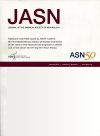Safety and Efficacy of Vadadustat for the Treatment of CKD-Related Anemia within and outside the United States
Among patients with dialysis-dependent CKD, safety and efficacy of vadadustat and darbepoetin alfa in the United States and outside the United States were similar.Among US patients with non–dialysis-dependent CKD, safety outcomes were similar; the relative risk for major adverse cardiovascular event with vadadustat was higher outside the United States.Region-specific analyses reflect differences in trial patient characteristics, hemoglobin targets, and access to health care services.
Background
Vadadustat's global clinical program was comprised of four noninferiority trials comparing vadadustat and darbepoetin alfa for CKD-related anemia: two in dialysis-dependent CKD (DD-CKD) and two in non–dialysis-dependent CKD (NDD-CKD). Although vadadustat met prespecified noninferiority criteria for hematologic efficacy globally, it did not meet noninferiority criteria for cardiovascular safety in the non–dialysis-dependent CKD trials. The trials considered regional differences in treatment practices, including hemoglobin targets within (10–11 g/dl) and outside the United States (10–12 g/dl).
Methods
To examine region-specific outcomes, we performed prespecified analyses for US and non-US patient subgroups from the vadadustat global program. The primary safety end point was first occurrence of major adverse cardiovascular event (MACE; death from any cause or nonfatal myocardial infarction or stroke). The primary efficacy end point was change in hemoglobin from baseline to average values during weeks 24–36.
Results
Four thousand eighty-four/7399 (55%) randomized patients were enrolled in the United States. In pooled analyses of all US patients, MACE risk was similar among vadadustat-treated and darbepoetin alfa–treated patients (hazard ratio [HR], 1.03; 95% confidence interval [CI], 0.90 to 1.17). HRs were similar for US patients with DD-CKD (HR, 1.00; 95% CI, 0.84 to 1.18) and NDD-CKD (HR, 1.06; 95% CI, 0.87 to 1.29). In pooled analyses of non-US patients, MACE risk was numerically higher among vadadustat-treated patients (HR, 1.12; 95% CI, 0.94 to 1.33); the higher risk was primarily attributed to the NDD-CKD subgroup (HR, 1.29; 95% CI, 1.03 to 1.60). In the non-US DD-CKD subgroup, MACE risk was similar among vadadustat-treated and darbepoetin alfa–treated patients (HR, 0.88; 95% CI, 0.67 to 1.17). Changes in hemoglobin were similar among treatment groups in all regions, as were rates of treatment-emergent and serious adverse events.
Conclusions
In patients with DD-CKD, safety (vis-à-vis MACE) and efficacy (vis-à-vis change in hemoglobin) of vadadustat and darbepoetin alfa were similar when stratified by region (US versus non-US). In US patients with NDD-CKD, safety and efficacy of vadadustat and darbepoetin alfa were similar.
Clinical Trial registry name and registration number:
NCT02865850, NCT02892149, NCT02648347, NCT02680574.




